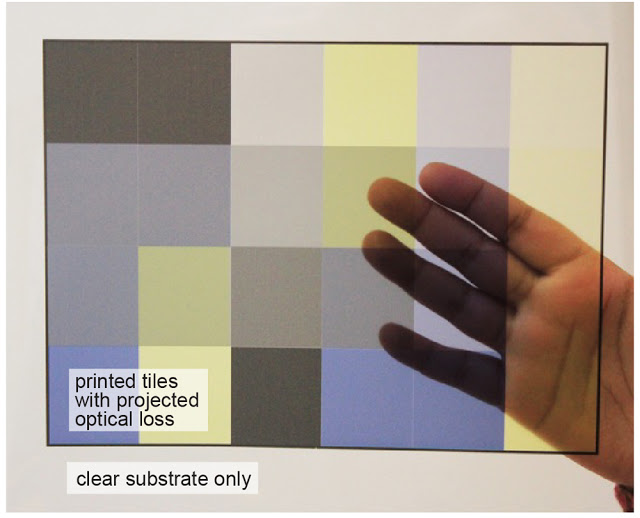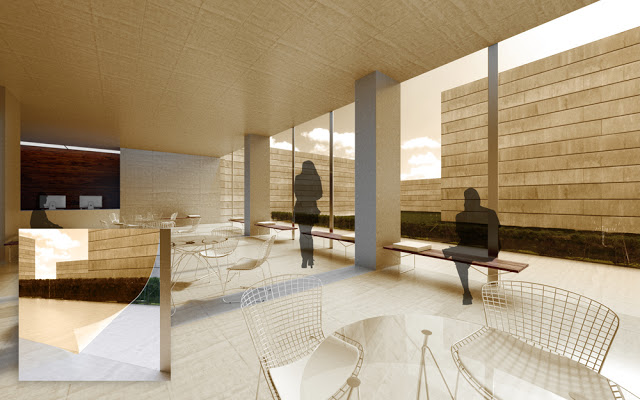| Online: | |
| Visits: | |
| Stories: |

| Story Views | |
| Now: | |
| Last Hour: | |
| Last 24 Hours: | |
| Total: | |
Low-Cost, ‘Tunable’ Window Tintings Developed
Technology developed by the University of Cincinnati and industry partners can do something that neither blinds nor existing smart windows can do. This patent-pending research, supported by the National Science Foundation, will lead to low-cost window tintings which dynamically adapt for brightness, color temperatures and opacity (to provide for privacy while allowing light in).
A partnership between the University of Cincinnati, Hewlett Packard, and EMD/Merck Research Labs has resulted in a patent-pending breakthrough in ‘tunable’ window tintings. The breakthrough means traditional window shades could soon be replaced by a low-cost tinting where the brightness, color temperature (warm or cool just like incandescent light bulbs) and opacity (privacy) are adjustable by the user.
Details on this research, partly funded by the National Science Foundation, are in the June issue of the prestigious trade journal, “Applied Optics.”
The research was led by Sayantika Mukherjee, doctoral student in UC’s Novel Devices Laboratory, part of the university’s College of Engineering and Applied Science, and by W.L. Hsieh, visiting doctoral student from the Institute of Applied Mechanics, National Taiwan University; N. Smith, scientist at Merck Chemicals, Ltd.; M. Goulding, scientist at Merck Chemicals, Ltd.; and Jason Heikenfeld, UC professor of electrical engineering and computing systems.
Importantly, the newly developed device structure that makes these “smart windows” possible is very simple to manufacture, allowing affordability for both business and home use. It can be integrated into new windows or even easily applied to already existing windows, by means of a roll-on coating consisting of a honeycomb of electrodes.
BENEFITS OF THE NEW SMART WINDOWS

Credit: Timothy Zarki/University of Cincinnati
States UC’s Jason Heikenfeld, “Simple electronic window switching is not enough. You need to provide consumers with something you can’t do mechanically, and for which there is already a large demand. For example, there is already proven demand for control of color temperature in the light bulb market, and after all, windows are a source of lighting. Maybe even more compelling, go home to your neighborhood and look at the drawn blinds for privacy but which also block sunlight. What if you could have your privacy and also let the light in at any brightness you want?”
So, in other words, shade and privacy can be simultaneously, electronically controlled for the first time. Windows could go milky for privacy so no one can see in, but still allow 90 percent (or more) of the available light in. Or, a setting change could dim the entering light or change the color of the light along a spectrum from cooler blue to warmer yellow. “Blinds can’t do that,” said UC’s Mukherjee.
So, in summary, the new UC-developed Smart Window device structure provides options for doing any one of the following:
Be adjusted simultaneously for brightness and color temperature much like consumers can today buy light bulbs that provide a warm or a cool light. This will affect the quality of the light entering a home or building.
THE TECHNOLOGY BEHIND THE BREAKTHROUGH
The challenge for the UC, Merck and HP team consisted of applying this technology, common in e-paper electronic displays on our mobile and computer devices, to a larger surface like windows and to do so in a way that could be manufactured inexpensively, for less than the $30 per square foot, which is the industry standard for window manufacturing. It’s a challenge the team has worked on for the past three years thanks to in-kind support from all three partners and to a $357,526 grant from the National Science Foundation’s Grant Opportunities for Academic Liaison with Industry program.
Explains Mukherjee, “Basically, one color has one charge. Another color has another charge, and we apply voltage to repel or attract the colors into different positions. The basic technology is not that different from what our group has previously demonstrated before in electronic display devices. The greater challenge was to find an appropriate device structure in order to apply the technology to the larger surface area of a window in a way that was inexpensive and fairly easy. The greater impact for us was to realize the potential of a few selective but compelling operating modes such as changing color temperature or privacy/shade.”
Contacts and sources:
M.B. Reilly
Citation: “Electrokinetic pixels with biprimary inks for color displays and color-temperature-tunable smart windows.” S. Mukherjee, W. L. Hsieh, N. Smith, M. Goulding, J. Heikenfeld. Applied Optics, 2015; 54 (17): 5603 DOI: 10.1364/AO.54.005603
Source: http://www.ineffableisland.com/2015/06/low-cost-tunable-window-tintings.html






